|
 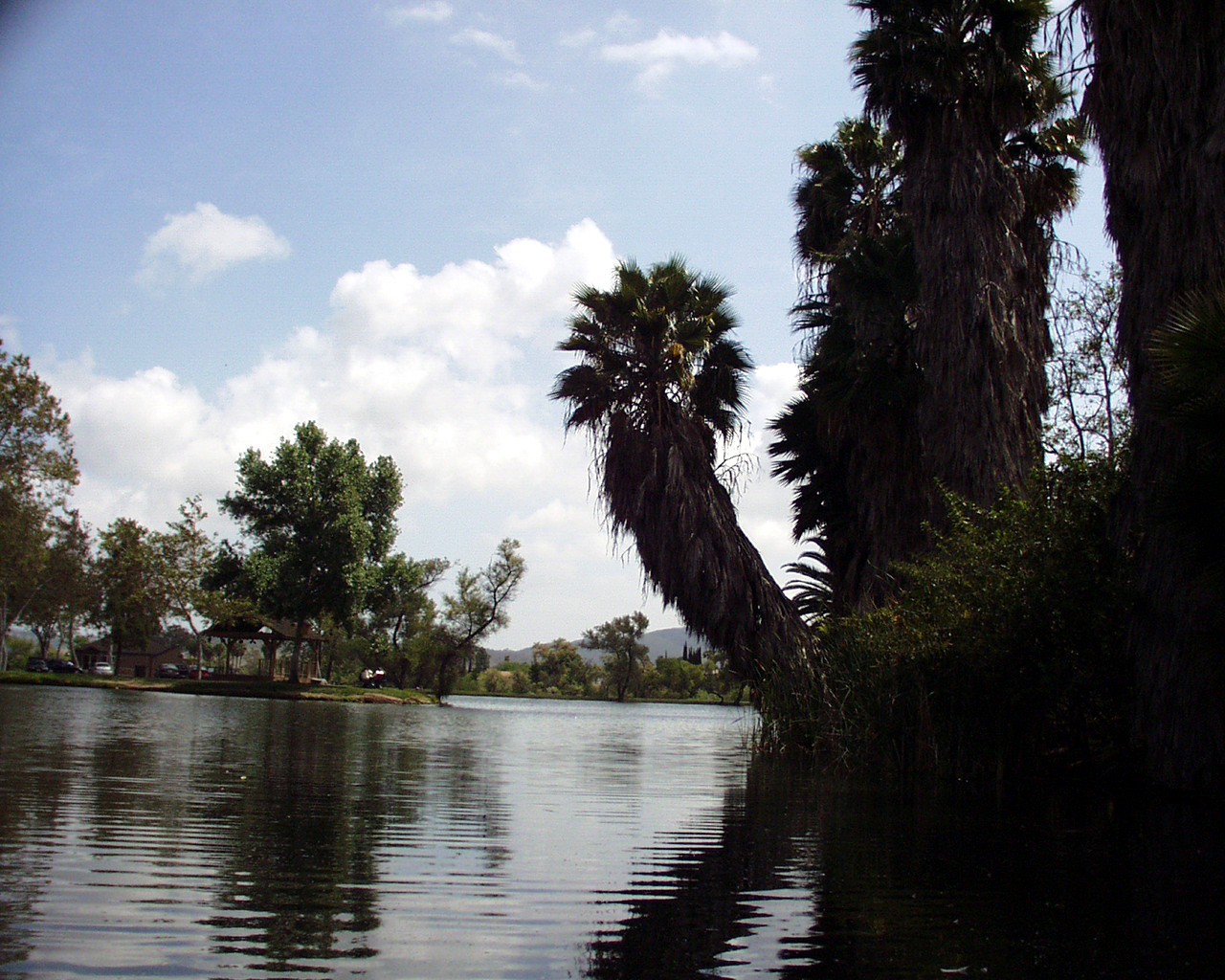
By Donald H. Harrison
SANTEE, Calif.—As you feed the ducks in the Santee Lakes, or
watch naval enthusiasts sail radio-controlled model battleships and cruisers on
its waters, or picnic along its shores, you may not realize that you are
standing at a venue that back in the 1960s was a sensation of the water
reclamation world and a magnet for delegations from parched countries
everywhere, including Israel.
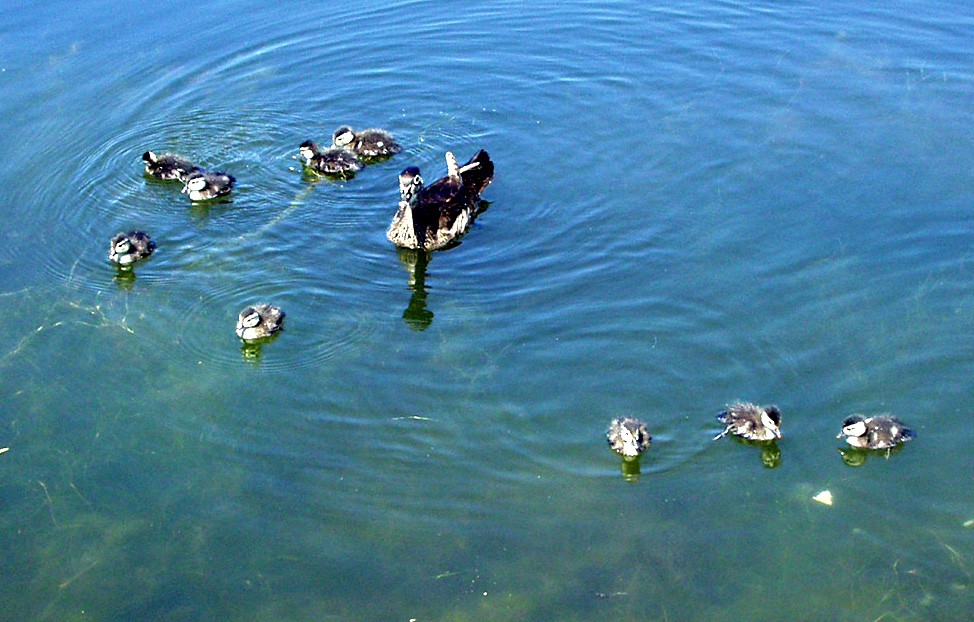 Today,
it's not at all uncommon for cities to used reclaimed water for recreational
purposes but back in 1959, when the Santee County Water District decided to
reclaim water from sewage and turn it into lakes, it was a novel and
controversial idea. However, with the neighboring City of San Diego charging
more and more for the pipelining of treated sewage into the Pacific Ocean, the
district's director, Ray Stoyer, was able to persuade his board that creating
the lakes would be less expensive economically and more beneficial for
recreation-hungry Santee residents. Today,
it's not at all uncommon for cities to used reclaimed water for recreational
purposes but back in 1959, when the Santee County Water District decided to
reclaim water from sewage and turn it into lakes, it was a novel and
controversial idea. However, with the neighboring City of San Diego charging
more and more for the pipelining of treated sewage into the Pacific Ocean, the
district's director, Ray Stoyer, was able to persuade his board that creating
the lakes would be less expensive economically and more beneficial for
recreation-hungry Santee residents.
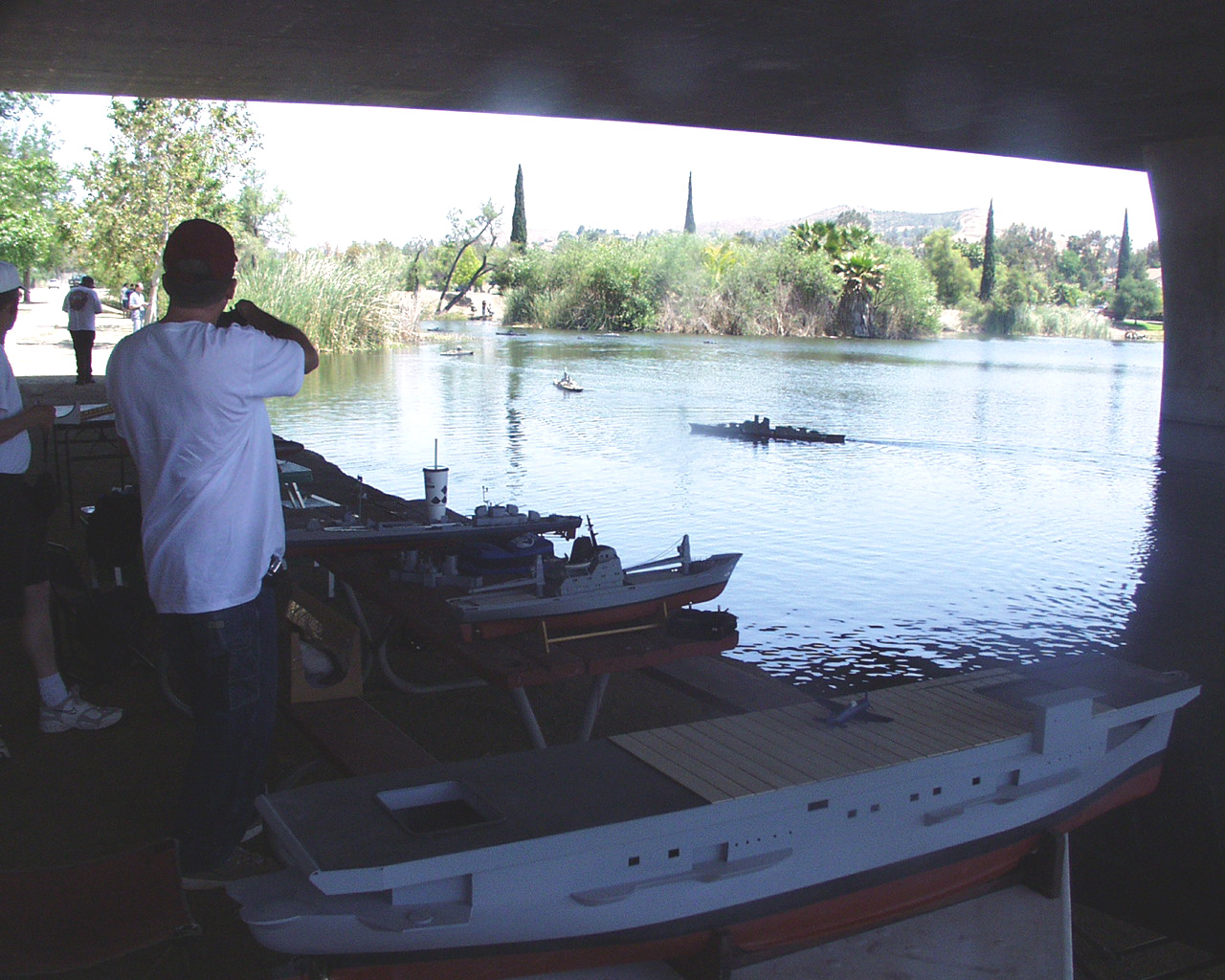 There
were some special geologic circumstances permitting Stoyer to envision his
system of small lakes, chief among them the fact that the area he wanted for the
project already had been mined for gravel down to the impervious layer of
clay. Thus, impervious lake bottoms could be created, meaning there was no
danger of the treated water percolating down to the ground water supply. There
were some special geologic circumstances permitting Stoyer to envision his
system of small lakes, chief among them the fact that the area he wanted for the
project already had been mined for gravel down to the impervious layer of
clay. Thus, impervious lake bottoms could be created, meaning there was no
danger of the treated water percolating down to the ground water supply.
Another factor was that the man who owned the mined out gravel pits, Bill Mast,
was willing to donate the land to the district, which since has become known as
the Padre Dam Municipal Water District. Mast was a good businessman. If
the project were to be built, irrigation water could be routed from the lakes to
the property he wanted to develop into a golf course, which today is known as
the Carlton Oaks Country Club.
Up to the point it decided to create the lakes, the water district had been
giving its sewage primary and secondary treatment. Primary treatment
involves holding the sewage in a tank long enough to permit big particles to
settle out and light particles to float up. The particles then are
separated from the water and disposed of.
In secondary treatment, the water is pumped to another tank in which bacteria,
kept alive by a constant flow of air, feed off the impurities, a process
that further cleanses the water.
To be able to turn this water into lake water, suitable for fowl and fish, other
processes needed to be introduced to remove both nitrogen and phosphorus from
the wastewater. In a recent interview, Dr. Harold Bailey, who retired as
the Padre Dam Municipal Water District's director of operations at the end of
May, said that by pumping the wastewater from the secondary treatment tank to
another tank, with a different population of bacteria, Stoyer was able to solve
the problem of nitrogen.
Removing the phosphorus was a more difficult problem, but this was where the
geology of the region came in handy. The district was able to pump the
water to a gravel area lying upstream from the proposed lakes. Located on
the same kind of impervious clay, these gravel beds could serve as giant
filters, cleansing the water of phosphorus before it flowed by gravity into the
lake system. In the first lake, the water would be allowed to oxidize by
exposure to the air, then be pumped to the second lake for more oxidation, and
finally to a third lake, which could be used for recreational purposes.
The engineering and most chemical problems solved, Stoyer next considered the
public relations problem—how was he going to get the people of Santee to
accept the idea of boating, fishing, and picnicking by lakes filled with water
that once had been in their toilets. He decided to tantalize them by
fencing off the lakes and using its waters to irrigate the grounds surrounding
them with trees, grass and other plants. He also put in picnic tables
which could be seen—but not touched—through the fence. And then he
waited.
In Santee, sitting on San Diego's eastern border, summer temperatures can
sometimes exceed 100 degrees. Sweltering in such heat, Santee residents
saw the clear waters of the lake, the ducks and other water fowl splashing
happily, the empty picnic tables, and began to question why they also could not
take advantage of the lake. To which Stoyer replied in speech after speech
promoting water conservation that only after the county Department of Health
ruled that the water was absolutely safe for human contact could the district
even consider opening it up. Stoyer thereby helped to create pent-up
demand.
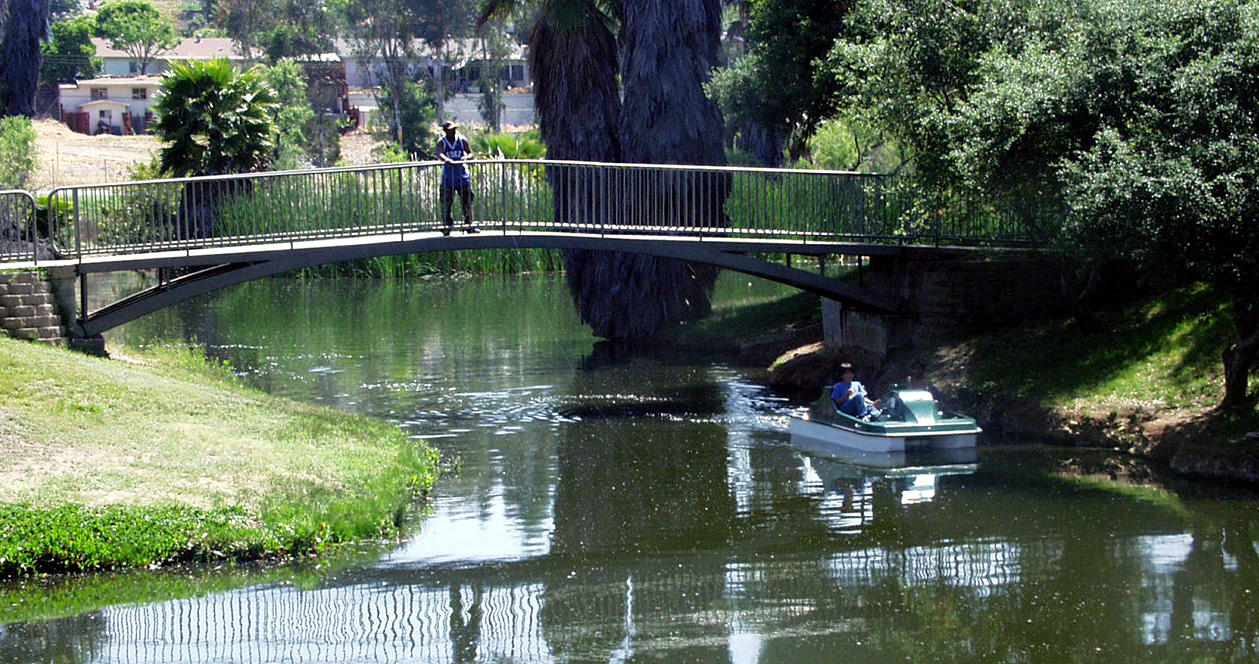 Dr.
J.B. Askew, the health department's director, announced opposition in 1961 to
permitting boating and picnicking at the lakes following unsatisfactory sampling
of the waters for bacteria. Ten years later, in his book The Town That
Launders Its Water, author Leonard A. Stevens quoted Askew as voicing these
concerns: "You cannot let children around a body of water before they are
in it. At least their hands are in it, and the next minute their hands are
in their mouths." Dr.
J.B. Askew, the health department's director, announced opposition in 1961 to
permitting boating and picnicking at the lakes following unsatisfactory sampling
of the waters for bacteria. Ten years later, in his book The Town That
Launders Its Water, author Leonard A. Stevens quoted Askew as voicing these
concerns: "You cannot let children around a body of water before they are
in it. At least their hands are in it, and the next minute their hands are
in their mouths."
Stevens reported that in discussions between the district and the health
department, it was decided that "they would percolate the water from the
oxidation pond through soil and then channel it into the recreational
lake. After this, there would be little chance of pollution endangering
human health."
The system was constructed, the water was again tested, and Dr. Askew gave his
permission for the lakes to be opened to the public in June 1962. Grand
opening ceremonies attracted 10,000 people. The California Fish and Game
Department meanwhile introduced some fish species into the lake to see which
ones would thrive and which ones would not. After gathering its data, the
department authorized Santee Lakes to have "fish for fun" programs, in
which fish caught in the lakes had to be thrown back. After two years of further
testing, the Fish and Game Department concluded fish taken from the lake
were safe to take home and cook.
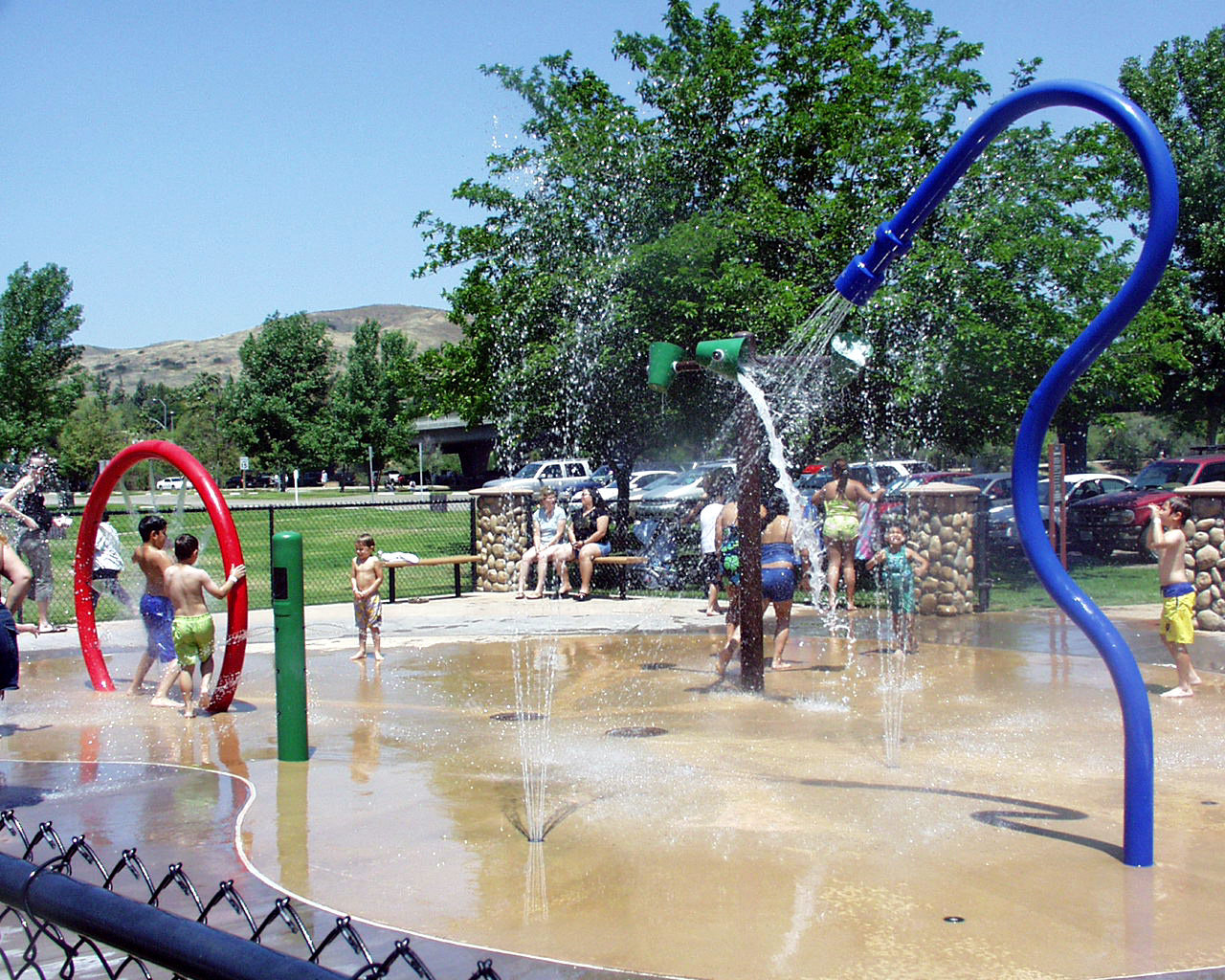 Step
by step, the lakes proved themselves the equivalent of freshwater lakes. A
swimming pool, drawn from lake waters, was authorized. A small water park
where children can cavort is a favorite feature today. Step
by step, the lakes proved themselves the equivalent of freshwater lakes. A
swimming pool, drawn from lake waters, was authorized. A small water park
where children can cavort is a favorite feature today.
By the time Bailey came to the Padre Municipal Water District about 15 years
ago, some significant changes had been made to the Santee Lake system. The
gravel beds filtering phosphorus from the water had become saturated, so the
water had to be pumped from the beds to a new pond in which aluminum sulfate was
added. to combine chemically with the phosphorus, thereby causing it to
precipitate. After this stage, the water was pumped into the lake.
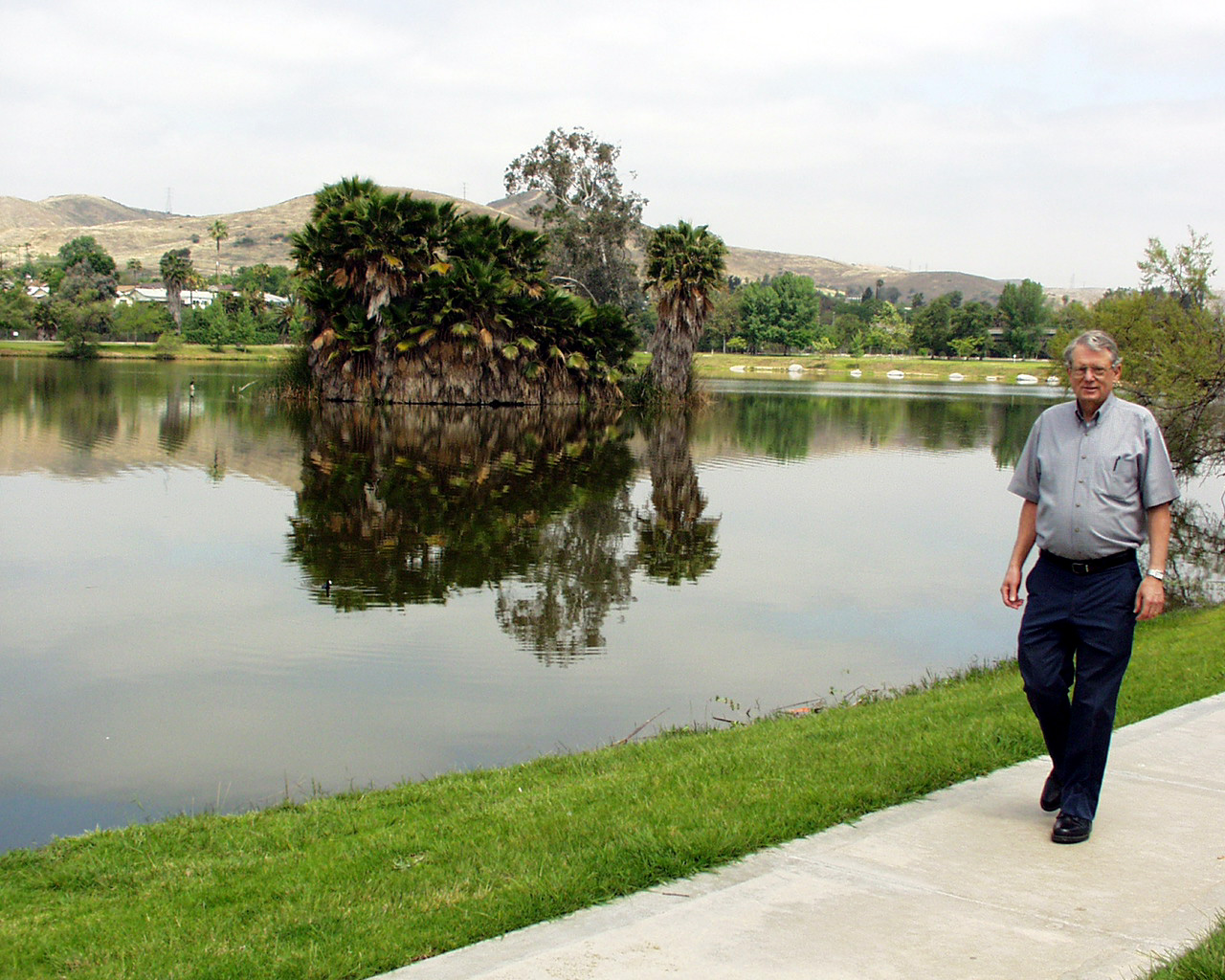 Bailey
was hired away from the San Diego Metropolitan Water District to design a new
system for cleansing the water before it went into the lake, and to triple the
capacity of Santee's sewage treatment in response to great leaps in population
growth. Today, the Santee Lakes no longer can accommodate all of Santee's
reclaimed sewage, so much of it is pumped to the San Diego Metropolitan Water
District—the very agency whose charges back in 1959 prompted Santee officials
to develop the lakes. Bailey
was hired away from the San Diego Metropolitan Water District to design a new
system for cleansing the water before it went into the lake, and to triple the
capacity of Santee's sewage treatment in response to great leaps in population
growth. Today, the Santee Lakes no longer can accommodate all of Santee's
reclaimed sewage, so much of it is pumped to the San Diego Metropolitan Water
District—the very agency whose charges back in 1959 prompted Santee officials
to develop the lakes.
To cleanse the water before it reaches the lakes, Bailey installed
engineer James Bernard's Bardenpho process, which takes out the biological
materials, the nitrogen and the phosphorus all at once.
Harold Bailey
Before water is put into the lakes, which today number six,
there also is a process by which water is chlorinated to kill any bacteria, then
dechlorinated to protect the fish in the lake. No longer relying on the
natural gravel beds for filtration, the Santee Lakes from an engineering
standpoint are no longer as remarkable as they once were. But they still stand
as pioneers in the movement toward winning public acceptance for recreational
use of reclaimed water.
In his book, Stevens reported that during the development stages, the lakes
became internationally famous. "The significance of what happened at Santee
is pointed up by several name-packed guest books kept by Martin Poe, the
project's chief water pollution control plant operator. They show that
thousands of official visitors have come to see the lakes from nearly every
state in the United States and from thirty-nine countries. Many of the
visitors are officials from local, state or national governments. They are also
water pollution control engineers and scientists, journalists, students and
other individuals interested in solving water problems. The dry lands of
Israel and India are well represented in Poe's books, for in these distant
countries, as in southern California, water is so precious that using it to the
fullest extent is absolutely essential."
Now 35 years since Stevens book was published, district officials are
embarrassed to say that they cannot find Poe's guest books in their archives,
and until they do, the names of the Israeli officials who may have been
influenced by the experience at Santee Lakes are not known. There is no reason
to doubt, however, that these lakes, today taken for granted as pleasant
places to while away a lazy afternoon, helped to encourage acceptance of
wastewater projects not only here in Southern California but in Israel and
elsewhere.
|

